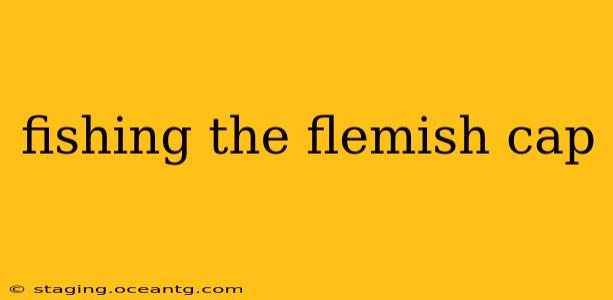The Flemish Cap, a massive underwater plateau located off the coast of Newfoundland and Labrador, is renowned for its rich biodiversity and bountiful fishing grounds. This area, a unique confluence of cold Arctic and warm Gulf Stream waters, supports a diverse array of commercially important fish species, making it a hotspot for fishing activity and a subject of intense scientific and management interest. This article delves into the intricacies of fishing the Flemish Cap, exploring its ecological significance, the species targeted, the challenges faced, and the future of this vital ecosystem.
What species of fish are caught on the Flemish Cap?
The Flemish Cap's unique oceanographic conditions create a highly productive environment, attracting a wide range of commercially valuable fish species. Northern shrimp, redfish, and various groundfish species like cod and haddock are particularly abundant. The area also supports populations of other species, although perhaps not in commercially significant numbers, contributing to the overall ecosystem health and biodiversity. The specific species caught can vary depending on the season and fishing quotas.
What are the challenges of fishing the Flemish Cap?
Fishing the Flemish Cap presents several significant challenges. The remote location increases operational costs and logistical complexities. The harsh weather conditions prevalent in the North Atlantic pose considerable risks to fishing vessels and their crews. Furthermore, sustainable management of the fishery is paramount to preventing overfishing and protecting the long-term health of the ecosystem. Balancing economic needs with environmental conservation remains a central challenge. Precise navigation and the use of sophisticated fishing gear are essential given the varied bathymetry of the region.
Is fishing sustainable on the Flemish Cap?
The sustainability of fishing on the Flemish Cap is a complex and ongoing issue. While the area boasts immense potential, responsible management practices are crucial. Strict quotas, monitoring of fishing activity, and ongoing scientific research are essential to ensure the long-term health of the fish stocks and the broader ecosystem. International cooperation among nations with fishing interests in the area is also necessary for effective management. Recent years have seen a shift towards more sustainable practices, however, ongoing monitoring and adaptation remain critical.
How deep is the Flemish Cap?
The Flemish Cap is a relatively shallow underwater plateau, but its depth varies significantly across the region. The shallowest areas might only be a few hundred meters deep while deeper regions can reach depths of over 1000 meters. This bathymetric complexity influences the distribution of different fish species and presents challenges for fishing operations. The variation in depth is due to the geological formation of the plateau and contributes to the diversity of habitats and the species found there.
What is the future of fishing on the Flemish Cap?
The future of fishing on the Flemish Cap hinges on a continued commitment to sustainable practices and collaborative management. Scientific research plays a critical role in understanding the ecosystem's dynamics and informing management decisions. The implementation of effective monitoring systems, along with adherence to fishing quotas, will be critical in preventing overexploitation. A focus on reducing bycatch and improving fishing selectivity is also vital for ensuring the long-term health of the ecosystem and the sustainability of the fishery. International cooperation and transparency remain pivotal to achieving long-term sustainability.
This article provides a comprehensive overview of fishing on the Flemish Cap, highlighting its ecological importance, the challenges, and the imperative for sustainable management. Ongoing research and collaboration between scientists, policymakers, and fishing stakeholders will be key to ensuring the preservation of this remarkable and valuable marine ecosystem for future generations.
